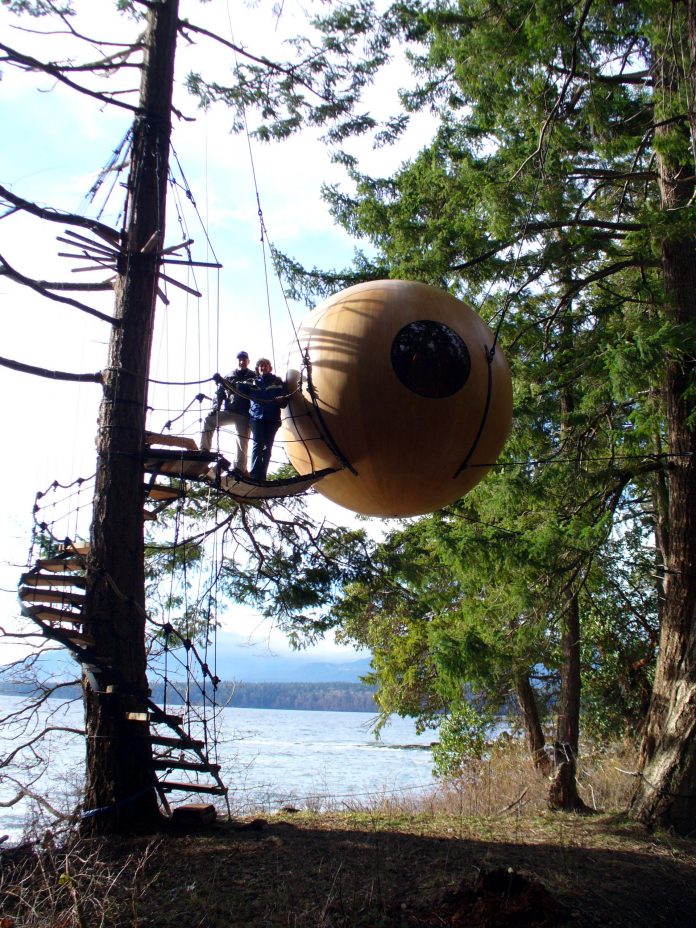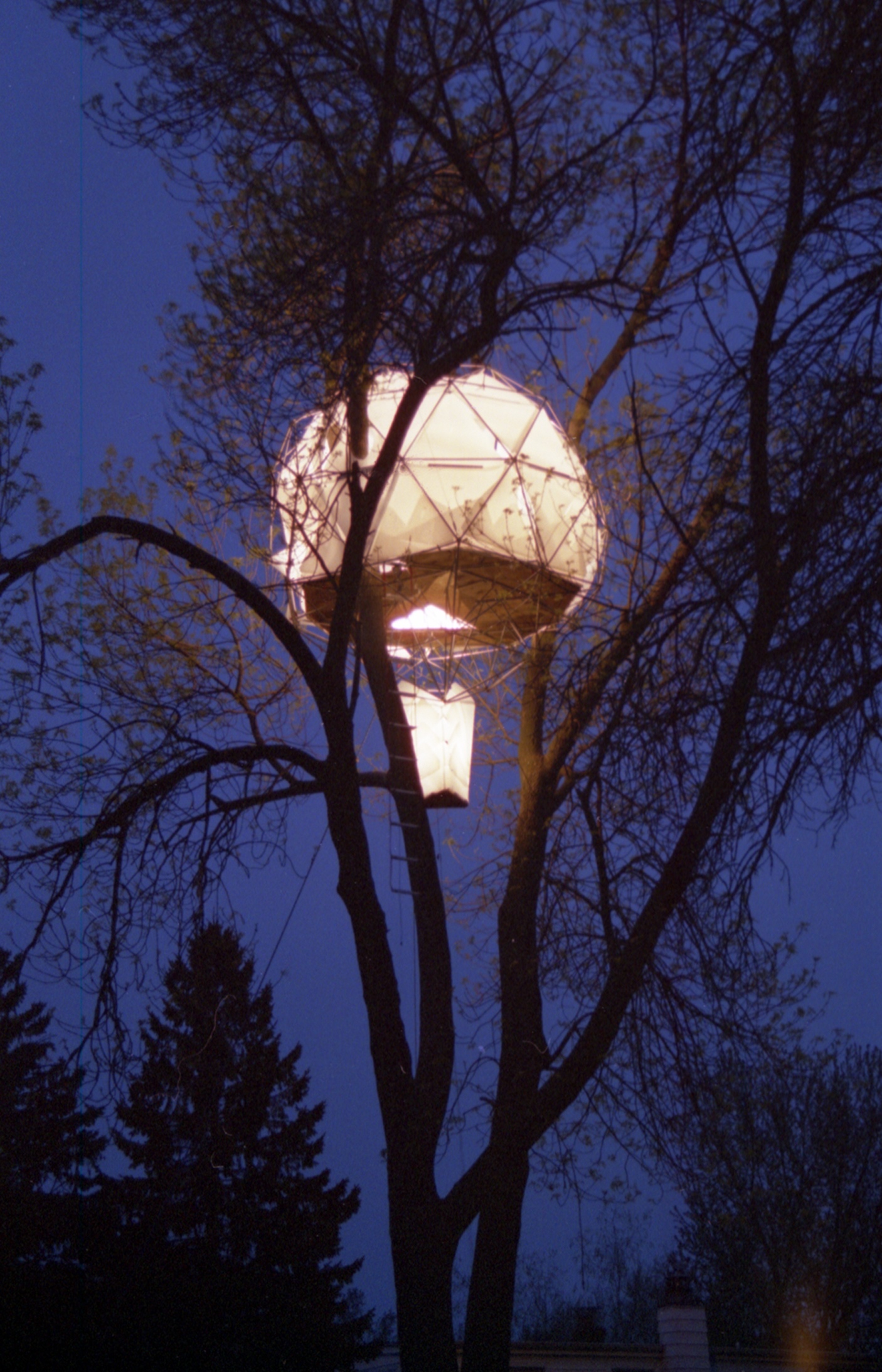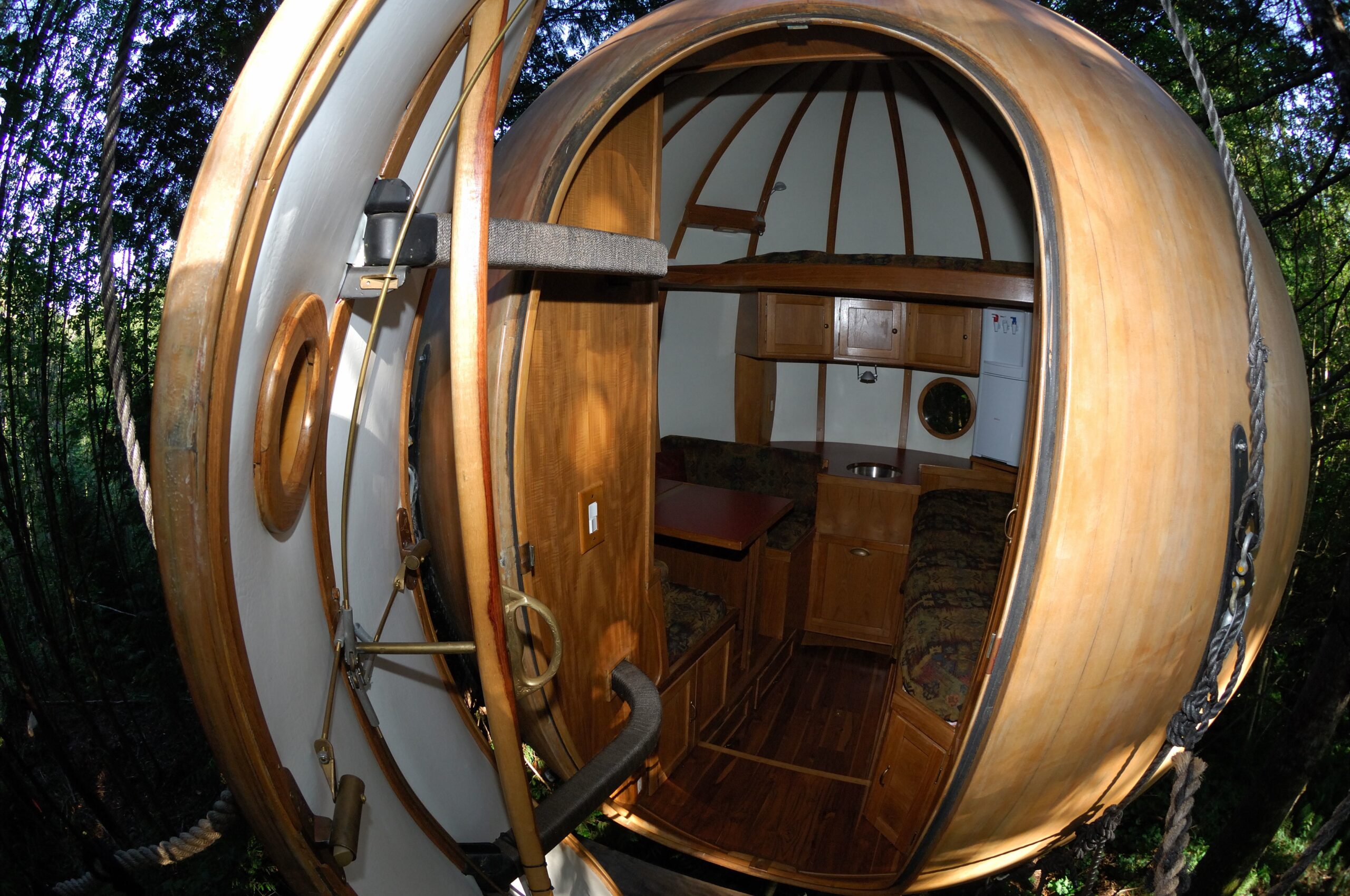
Text & Photos Andy Round
Once upon a time, tree houses were the stuff of Enid Blyton books and boyhood fantasy. A couple of planks nailed across a sturdy branch were enough to catapult childish imaginations into another dimension. The tree house now, however, is all grown up. And there is a very, very happy ending.
Those random bits of awkwardly nailed wood have magically transformed themselves into period cabins, science fiction-inspired pods and even luxurious safari tents. The kids were right all along. Living up a tree is great. The only difference is a more adult need for sophisticated design, hot and cold water and, well, perhaps a Jacuzzi or two.

Fortunately, there are plenty of tree house designers out there who are happy to accommodate even the most outrageous concepts. Take Dustin Feider, for example, whose designs are created from recycled materials to resemble Japanese lanterns. “The shape is completely determined by functionality,” he says. “Nature does not try to be beautiful; it only solves problems. The tree house is good for the tree and the person in it. It is light in weight, spacious and strong.”
Prices for Feider’s creations start from US$20,000, and he thoroughly recommends hanging several together in a wood and connecting them by rope bridge. Feider says dads often order the houses for their children with the intention of crawling in themselves.
“What’s the appeal of tree houses?” he laughs. “Have you ever been camping? Well, staying in a tree house is way better. It’s like a vacation in your backyard. Somehow, hanging out on branches up in a tree brings clarity.”

Feilder’s not wrong. Modern tree house enthusiasts include Sting and Donna Karan. Even Winston Churchill was a fan. He built a classic tree house for his three children at his home in Chartwell and, allegedly, used it as a refuge when political pressures piled up.
In the 21st century, Churchill’s cottage-shaped houses are not as fashionable. Today, if you want to make a big tree house impression you need to get a pod. And the world’s most famous purveyor of tree pods is the Canadian designer Tom Chudleigh. His wooden Free Spirit Spheres are bespoke works of art that avoid any damage to the tree by being suspended within a spider’s web of cables.
“The spheres are designed to fit harmoniously into a forest setting without altering it,” says Chudleigh. “They use the trees for a foundation and that enables us to celebrate the beauty and wonder that is already there without changing it.”

If this sounds highly spiritual, that’s because it is. Chudleigh believes that the “oneness” theme of the design creates a sacred space that connects to the eco-system of treetops. “It’s the perfect place to meditate and commune with Nature. To reconnect,” he says. In many respects it’s the ultimate in hippy chic living – but with luxury on tap.
What you get for your US$150,000 (and a two-year construction period) is a spiral staircase that curls around the tree to a rope bridge. Inside the suspended nut-shaped sphere is a double bed, settee, galley area with fridge and microwave in a cocoon created from hand-crafted wood, burnished brass, panoramic portholes and cane furniture. The overall effect is of a luxury yacht interior – only halfway up a tree.
For the rest of this article (Asian Geographic No.83 Issue 6/2011 ) and other stories, check out our past issues here or download a digital copy here










